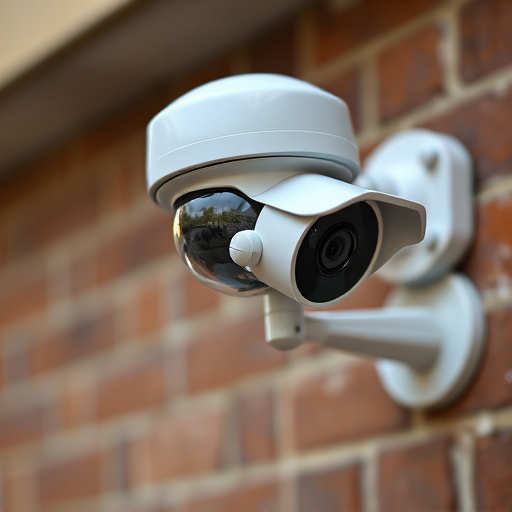Understanding human behavior and situational crime prevention is key to effectively placing dummy security cameras in high-risk areas like entry points, ATMs, parking lots, and valuable asset locations. They should be positioned at visible but unobstructed heights on structures, with added deterrence when placed near real security cameras. For home security, optimal indoor placement includes entryways, while outdoor sites like front doors, windows, driveways, and fences are ideal. The best public spaces for dummy cameras include intersections and entrances, mounted at eye level for maximum subtlety and effectiveness as both a deterrent and cost-saving safety measure.
“Enhance security while maintaining a subtle presence with strategic fake security camera placement. This comprehensive guide explores the psychology behind dummy cameras, legal considerations, and best practices for public spaces. Learn optimal locations for indoor and outdoor use, from retail stores to city streets. Discover advanced techniques for realistic visual deterrence, ensuring peace of mind without sacrificing aesthetics. Uncover the best locations for dummy security cameras to fortify your environment effectively.”
- Understanding the Psychology Behind Dummy Cameras
- Legal Considerations for Placement of Fake Security Equipment
- Best Practices for Strategic Placement in Public Spaces
- When to Use Dummy Cameras Indoors and Outdoors
- Advanced Techniques for Realistic Visual Deterrence
Understanding the Psychology Behind Dummy Cameras
Understanding the psychology behind dummy security cameras is key to an effective placement strategy. These fake cameras, when strategically positioned, can deter potential criminals by creating the perception of enhanced security. Research shows that the simple sight of a camera can encourage individuals to rethink their actions, as they are more likely to believe they are being watched. By understanding human behavior and the principles of situational crime prevention, you can identify the best locations for dummy security cameras.
The most effective places to install these devices include high-risk areas such as entry points, ATMs, parking lots, and areas with valuable assets or sensitive information. Dummy cameras should be placed at heights that are visible but not obstructed, often on buildings, fences, or posts. Additionally, positioning them near real security cameras can increase their deterrent effect. This combination sends a clear message to would-be intruders, acting as both a visual reminder and a psychological barrier.
Legal Considerations for Placement of Fake Security Equipment
When strategizing the placement of fake security equipment, it’s crucial to consider legal implications alongside strategic benefits. While dummy cameras can be an effective deterrent, their installation must adhere to local laws and regulations regarding surveillance and privacy rights. Property owners should ensure they are not violating any municipal codes or invading the privacy of neighbors. Best locations for dummy security cameras often include entry points, such as front doors, garage entrances, and windows visible from the street. Additionally, placing these devices in areas where criminals might attempt to gain unauthorized access can significantly enhance overall home security.
Best Practices for Strategic Placement in Public Spaces
When strategizing dummy security camera placement in public spaces, understanding high-traffic areas is paramount. The best locations for these fake cameras are places where natural surveillance would be expected, such as intersections, entranceways to buildings, and near emergency exits. Positioning them at eye level or slightly elevated ensures maximum visibility while maintaining a subtle presence. This tactic not only discourages real criminal activity but also gives the illusion of enhanced security, making potential perpetrators think twice before acting on their intentions.
Additional best practices include aligning dummy cameras with existing infrastructure like streetlights or signage, as these elements can help anchor the cameras’ positioning. Regular maintenance is crucial to keep these devices looking realistic and functional. Additionally, a diverse range of camera models can be employed to mimic actual security systems, further enhancing the deception factor. This strategic placement technique not only serves as a deterrent but also provides a cost-effective way to boost public safety in various settings.
When to Use Dummy Cameras Indoors and Outdoors
Dummy security cameras, also known as mock or decoy cameras, are an effective deterrent against would-be thieves and vandals, both indoors and outdoors. The best locations for these devices often depend on their intended purpose. Indoors, strategically placing dummy cameras in highly visible areas like entryways, lobbies, or open offices can send a strong message to potential intruders. They should be positioned where they mimic real security equipment, blending seamlessly with genuine cameras nearby, to ensure maximum impact.
Outdoors, best locations for dummy security cameras include front entrances, windows, and areas around valuable assets or property. Driveways, fences, and garden paths are also suitable spots. The key is to make these decoys look realistic, aligning them with actual camera lenses when viewed from the outside, while keeping them strategically hidden inside when not in use. This creates an illusion of a fully operational security system, effectively discouraging criminal activity.
Advanced Techniques for Realistic Visual Deterrence
To maximize the deterrent effect of dummy security cameras, strategically placing them in high-risk areas is key. The best locations often mirror those of genuine surveillance equipment, ensuring a realistic visual presence. Consider positioning them at entrances and exits, windows with line-of-sight to the street, and any other areas where potential intruders might attempt unauthorized access.
These dummy cameras should be mounted at eye level or slightly elevated, mimicking the typical placement of real security cameras. Additionally, pairing them with signs indicating the presence of surveillance can enhance their effectiveness. This combination creates a psychological barrier, deterring would-be criminals by conveying that your property is under constant watchful eye.
Fake security cameras, when strategically placed, can significantly enhance physical security in public spaces. By understanding human behavior and legal guidelines, you can maximize their deterrent effect. The best locations for dummy security cameras include high-risk areas, visible entry points, and frequently monitored zones. Both indoor and outdoor settings benefit from this tactic, with advanced techniques adding realism to further deter potential threats. Embracing these practices contributes to a safer environment, offering peace of mind in today’s digital era.
